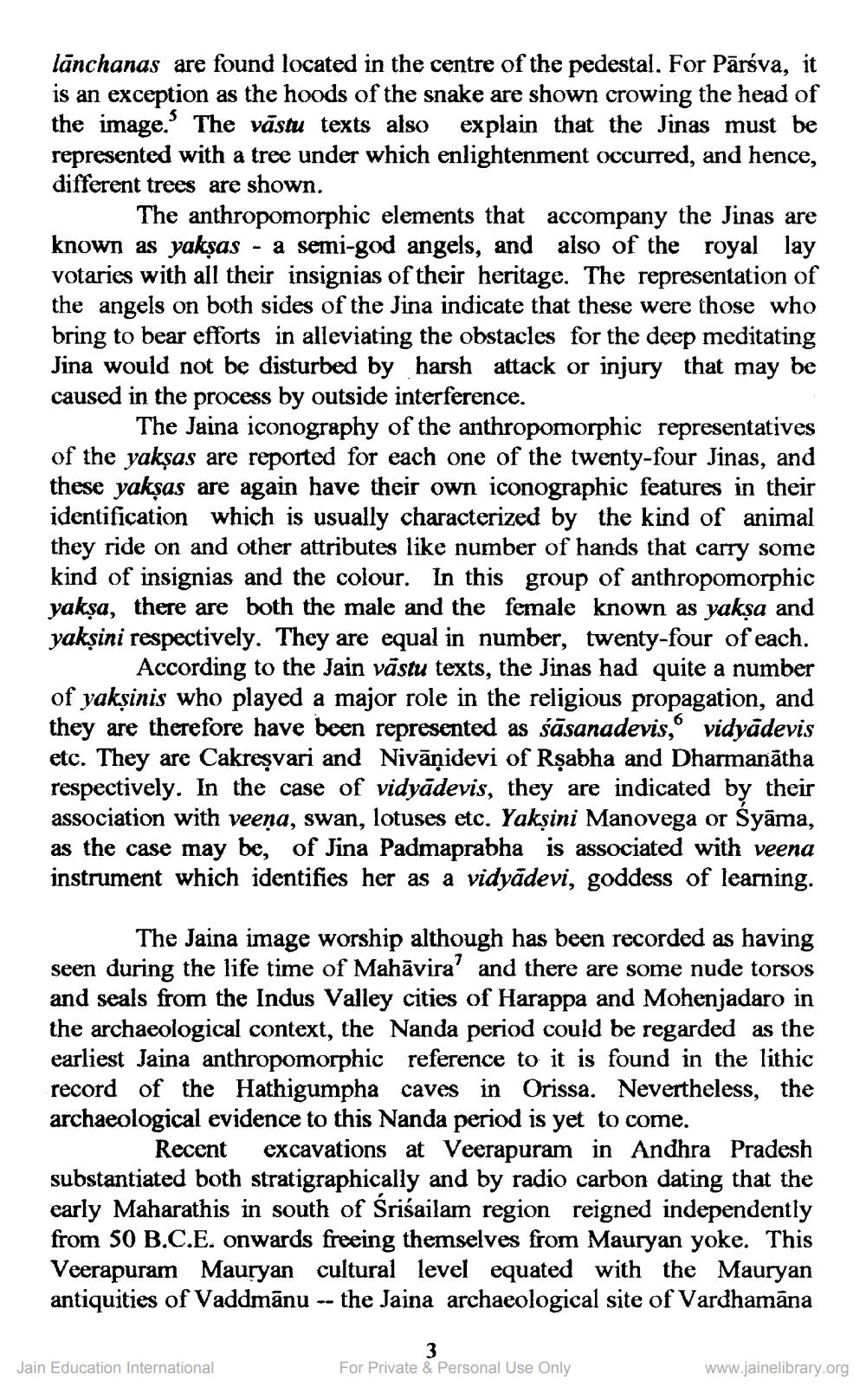Book Title: Jinamanjari 2000 09 No 22 Author(s): Jinamanjari Publisher: Canada Bramhi Jain Society Publication View full book textPage 7
________________ lānchanas are found located in the centre of the pedestal. For Pārsva, it is an exception as the hoods of the snake are shown crowing the head of the image. The vāstu texts also explain that the Jinas must be represented with a tree under which enlightenment occurred, and hence, different trees are shown. The anthropomorphic elements that accompany the Jinas are known as yakşas - a semi-god angels, and also of the royal lay votaries with all their insignias of their heritage. The representation of the angels on both sides of the Jina indicate that these were those who bring to bear efforts in alleviating the obstacles for the deep meditating Jina would not be disturbed by harsh attack or injury that may be caused in the process by outside interference. The Jaina iconography of the anthropomorphic representatives of the yakşas are reported for each one of the twenty-four Jinas, and these yakşas are again have their own iconographic features in their identification which is usually characterized by the kind of animal they ride on and other attributes like number of hands that carry some kind of insignias and the colour. In this group of anthropomorphic yakșa, there are both the male and the female known as yakșa and yakșini respectively. They are equal in number, twenty-four of each. According to the Jain vastu texts, the Jinas had quite a number of yakșinis who played a major role in the religious propagation, and they are therefore have been represented as sāsanadevis, vidyādevis etc. They are Cakreşvari and Nivāṇidevi of Rşabha and Dharmanātha respectively. In the case of vidyādevis, they are indicated by their association with veeņa, swan, lotuses etc. Yakșini Manovega or Syāma, as the case may be, of Jina Padmaprabha is associated with veena instrument which identifies her as a vidyādevi, goddess of learning. The Jaina image worship although has been recorded as having seen during the life time of Mahāvira' and there are some nude torsos and seals from the Indus Valley cities of Harappa and Mohenjadaro in the archaeological context, the Nanda period could be regarded as the earliest Jaina anthropomorphic reference to it is found in the lithic record of the Hathigumpha caves in Orissa. Nevertheless, the archaeological evidence to this Nanda period is yet to come. Recent excavations at Veerapuram in Andhra Pradesh substantiated both stratigraphically and by radio carbon dating that the early Maharathis in south of Srisailam region reigned independently from 50 B.C.E. onwards freeing themselves from Mauryan yoke. This Veerapuram Mauryan cultural level equated with the Mauryan antiquities of Vaddmānu -- the Jaina archaeological site of Vardhamāna Jain Education International For Private & Personal Use Only www.jainelibrary.orgPage Navigation
1 ... 5 6 7 8 9 10 11 12 13 14 15 16 17 18 19 20 21 22 23 24 25 26 27 28 29 30 31 32 33 34 35 36 37 38 39 40 41 42 43 44 45 46 47 48 49 50 51 52 53 54 55 56 57 58 59 60 61 62 63 64 65 66 67 68 69 70 71 72
